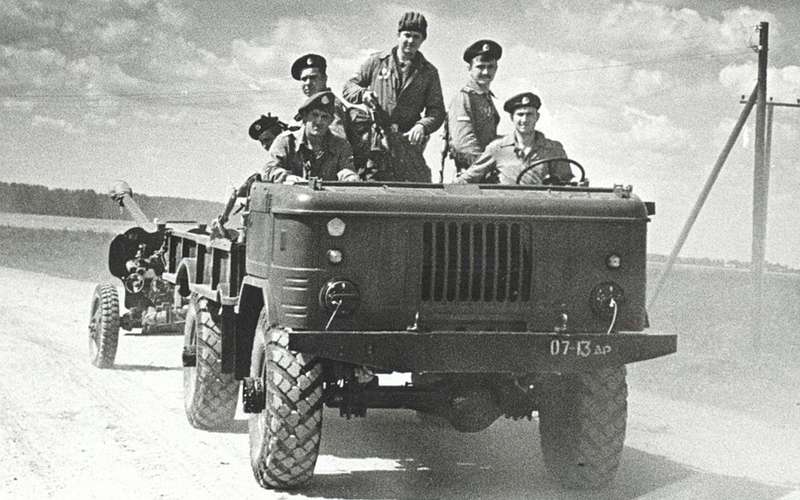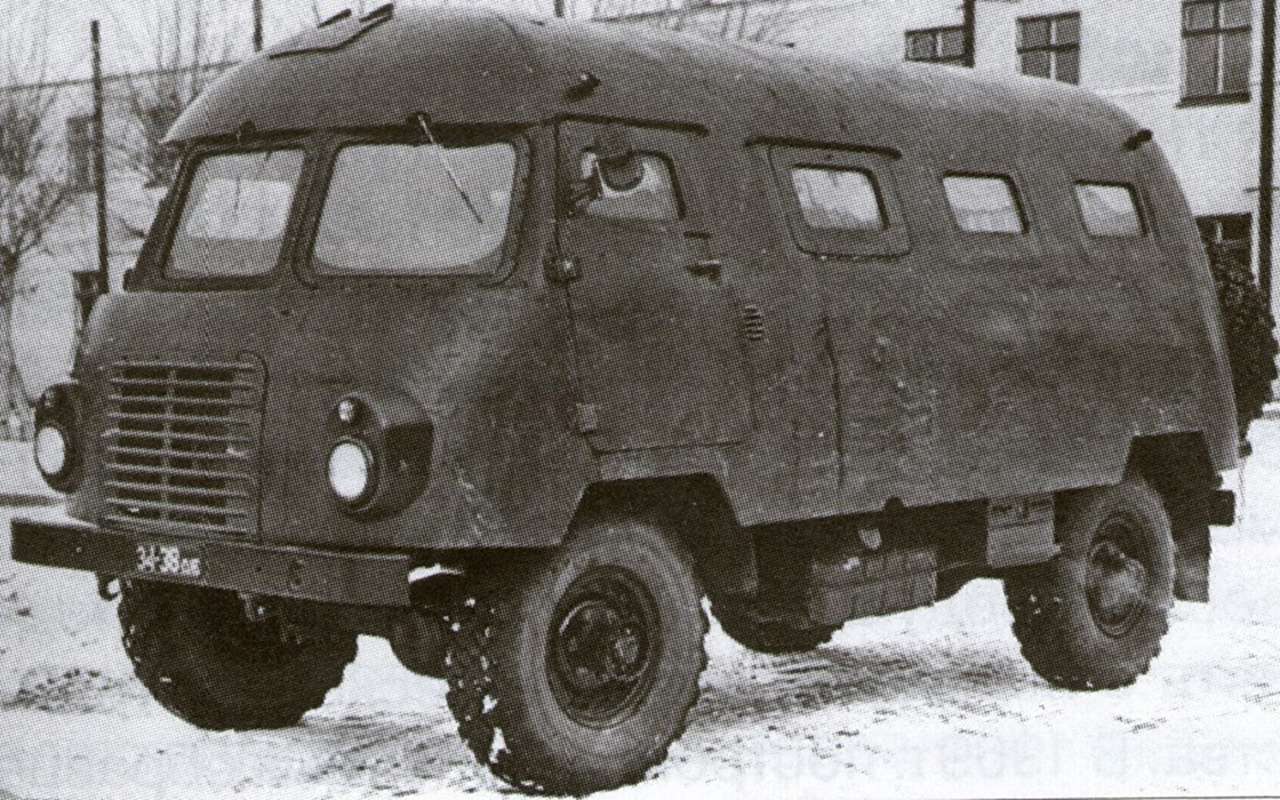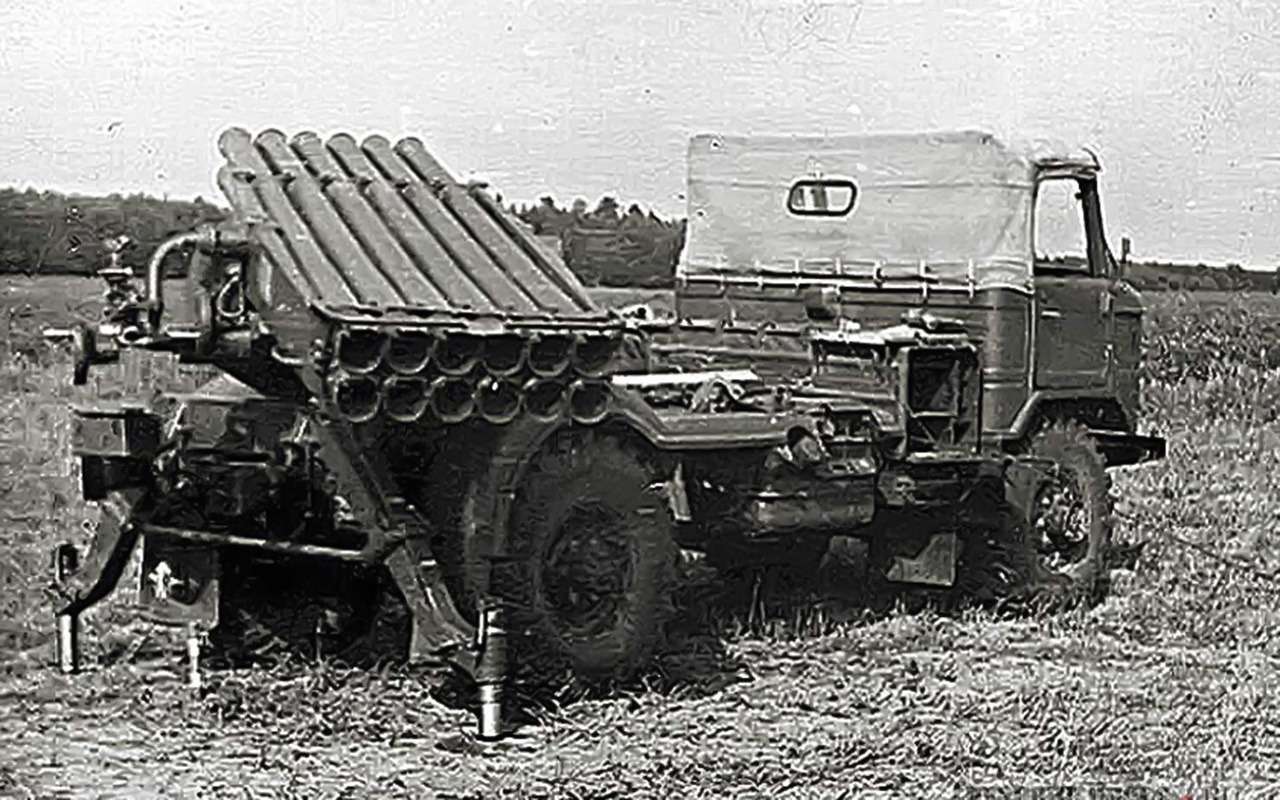How did “Shishiga” go
In the 50s in the USSR, the GAZ-63 was considered the main all-wheel drive “two tons”. However, the truck was prone to tipping over and the engine power was insufficient. For the military, the small size was also important, adding to the air transportability of the machine.
As a result, GAZ-66 appeared, launched in mass production in 1964. The designers solved the tilting problem by moving the center of gravity lower than in the “sixty-third”. At a turning diameter of 50 m and a speed of 65 km/h, a skid appeared, into which the GAZ-66 could overturn.
Thanks to the new 8-cylinder engine, the Shishiga became the most powerful four-wheel drive truck in the Soviet Union: 33 hp. per 1 ton empty weight.
The popular nickname “Shishiga” comes from the numbers “sixty-six”. And Shishiga in Russian mythology was called evil spirits.
In 1968, a centralized wheel inflation control system was introduced. Together with the ability to lock differentials, the car was able to adapt to all off-road conditions. The advantage was the new cabover cab design, which gave a good view of the road. On dry and dense soil, the GAZ-66 easily climbed 37°. By comparison, the 63rd started slipping at 28°.
“Shishiga” in the wartime conditions
The Army was ambivalent about the Sixty-sixth. On the one hand, the truck coped well with the tasks assigned to it, and on the other hand, it had a number of shortcomings. The main complaints concerned a cabover cabin. Between the driver and passenger was a shrouded engine that took up a lot of space. For this reason, the gear lever was located on the right rear of the driver. Prolonged driving with this position of the right hand on the gear lever led to pain in the shoulder. In addition, due to the engine being almost in the cockpit, it is usually unbearably hot to drive in Shishig in the summer.
In combat conditions, the survival rate for the GAZ-66 driver was extremely low. On trucks with an engine in the engine compartment, most debris falls in this part and the driver is better protected in the cab.


Despite this, “Shishiga” is still used in hotspots. There are also modifications to the GAZ-66, sometimes very unexpected. For example, GAZ-66B for the Airborne Forces, where you can fold down the top of the cabin and the windshield. In this form, the truck is easy to place on the plane. From the “Shishiga” for landing, they also designed a mini-“Grad”, which allows you to shoot at the enemy with missiles and perform remote mining.
Also, on the basis of the GAZ-66, staff vehicles, degassing chambers, tank trucks, “nurses” and pontoon parks were produced.

An attempt to create a bus designed for nuclear war deserves special attention. The model was a KZ-1 body on the GAZ-66 chassis. The skin material in the form of foam and fiberglass reduced the penetration of radiation. The shape of the canister is designed to dampen the shock wave. However, it did not come to series production.
“Shishiga” in peacetime
GAZ-66 is very voracious and completely non-ergonomic, but the car’s ability to move around the country also makes it popular in civilian life.
The sixty-sixth can be found in the form of a dump truck or a shift bus. In the early 90s, in the Krasnoyarsk Territory, at the Berezovsky repair plant, shift buses for 19 seats were produced on the basis of “Shishiga”. They were called “Selyanka”, and during the movement it was important to hold the handrails more firmly.
Although the real “Shishiga” is becoming more and more rare. However, 966,000 cars have been produced all this time, and their complete disappearance is still a long way off.
- Little-known facts and photos of buses of the USSR – serial and experimental – here.
- The most heady changes of the 90s can be found at this link.
- “Behind the wheel” can also be read in Telegram
To this day, the GAZ-66, which was produced in 1964, can be found both in the tundra and on the streets of Russian cities.







